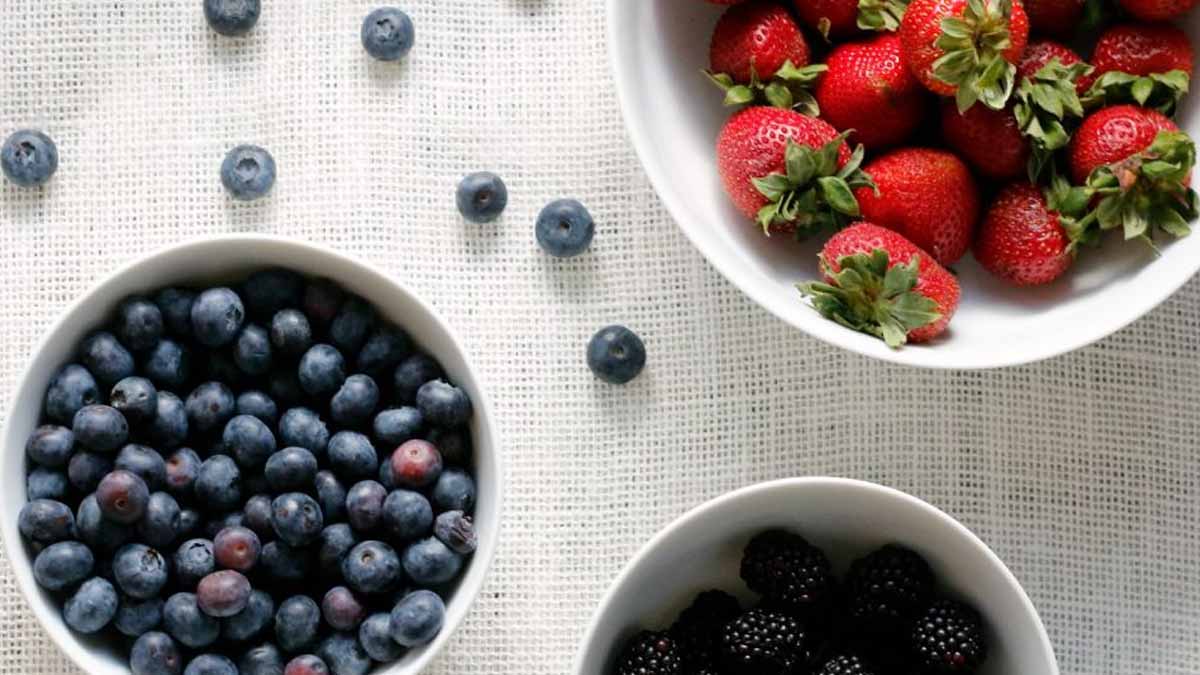Back from the store, set your bag down and give your fruit a minute that matters. Delicate skins bruise fast, and waste follows, yet a common kitchen staple changes the script. A quick rinse builds a small habit that saves flavor, money, and calm. Start as soon as you unpack, move with purpose, and let freshness linger longer. This simple step treats berries with care, keeps color bright. And it makes tomorrow’s breakfast, snacks, and desserts feel easy.
Why a gentle vinegar bath stops mold on berries
Small fruit bruises quickly because the skin is thin and full of moisture. Left alone, stray spores settle fast and spread, so soft spots appear overnight. Kitchen trials and experience agree: mild acidity reduces the germs that trigger fuzz, and it slows mushy textures without dulling taste. Used well, this wash protects berries while keeping their fragrance intact.
Think about the math. For every ten you snack on, two often turn fuzzy before tomorrow. That loss hits your budget, and it steals joy from plans for shortcake or a fruit salad. A brief soak shifts the odds, because acidity disrupts early microbial growth while the flesh remains firm and juicy.
Plain white vinegar works best because it is consistent and inexpensive. Its acidity is strong enough to help, yet gentle enough for delicate fruit when diluted. Use it as a rinse, not a marinade, and you balance safety and flavor, while your refrigerator becomes a calmer, kinder place for produce.
Exact washing steps, from soak to dry
Start by sorting the haul. Remove anything mushy or moldy because one piece can hurry spoilage in the rest. Next, fill a large bowl with three cups water and one cup white vinegar. Stir the mix, add fruit, and gently agitate so surfaces contact the solution evenly for full coverage.
Let the soak run five to ten minutes, which is enough time for contact to work. Then pour everything into a colander and give a light rinse under running water. You reduce surface acidity while you carry away loosened debris, so berries taste clean and stay fresh longer in the fridge.
Distribute a single layer on paper towels and wait until each piece achieves complete dryness. Dryness proves crucial since residual moisture encourages spoilage and deterioration during storage. Once dry, you’re prepared for containers; this represents the moment that secures the benefit you established with the thorough wash and rinse.
Strategic storage that decelerates spoilage for berries
Employ a shallow container lined with fresh paper towels. Shallow depth prevents crushing, while the towels absorb stray droplets that would accumulate and compromise skins. Position a lid loosely atop so excess moisture can dissipate; sealed lids capture humidity and hasten softening, so minor ventilation safeguards texture and aroma.
Do not mix different fruits. Some ripen faster than others, and the fast ones nudge their slower neighbors along. Keep types separate and you manage ripening rates more easily, while checking the container daily lets you remove troublemakers before they spoil berries nearby and cause a chain reaction. That small habit keeps aromas pure and textures lively.
Arrange a single layer whenever you can because weight creates dents and leaks. Cold storage helps, yet dryness stays crucial; use fresh towels if they turn damp or stained. With these small habits, you extend shelf life without gimmicks, and you keep color, bounce, and sweetness ready for the week ahead.
What actually happens : molds, moisture, and simple timelines
Yesterday’s carton looked perfect, then half turned soft by breakfast. That swing happens because thin skins and bruises give microbes a foothold and a food source. A brief acidic wash lowers the starting count, so growth takes longer, and berries face less stress during the first hours after you bring them home.
Acidity does not sterilize, and it should not. It simply tips the balance, which is enough for home storage when combined with cold air. Because the method is quick, you can fold it into your routine easily, and consistency multiplies the benefit across the season. Small steps beat late fixes.
Rinsing matters too. A light spray pulls off loosened spores without soaking the fruit again, which would undo your work and invite new damage. Drying then finishes the job by removing the water that microbes need, so storage starts from a cleaner, calmer baseline and stays that way longer. That sequence keeps results consistent.
Enjoy-now ideas : cocktails, galette, and pops
Use the saved freshness well. Shake a Summer Cobbler with whiskey and ice for your next gathering; a blackberry and lime-peel twist looks sharp. According to the Test Kitchen, a mint sprig adds lift, and classic silver mint julep cups turn an easy drink into a small celebration of berries.
Skip stress baking and choose a galette. A store-bought crust transforms into a crisp envelope that maintains structure beneath a warm strawberry filling. This rustic dessert welcomes casual slices, and since the fruit remains vibrant and juicy, leftover possibilities prove minimal at any gathering, even during a hectic weekend table.
Freeze pops for hot days. Fresh fruit drives a deep indigo hue and a clean, all-natural taste that feels light. For adults, drop a pop into sparkling wine and enjoy the playful fizz as it melts; a pool party quickly turns into a simple conversation starter. Kids get a treat, and hosts gain an easy win.
One small habit that protects flavor
A quick rinse, a short soak, and mindful storage change outcomes. You save money, you waste less, and snacks stay ready. Because the method is easy, you will keep using it, even on rushed nights. With a routine you can trust, berries reward you with color and bite all week while plans stay flexible and kitchen stress drops. Small acts build momentum, and freshness becomes a habit you hardly think about.
